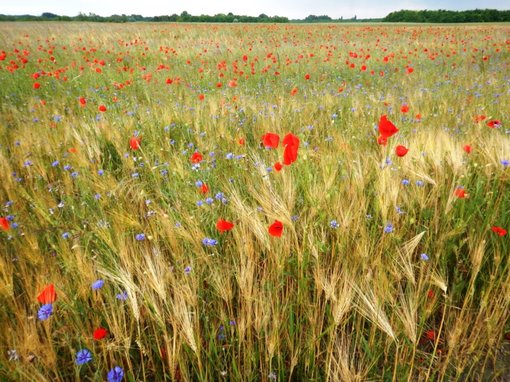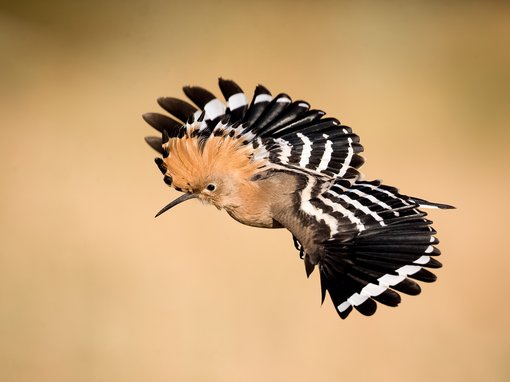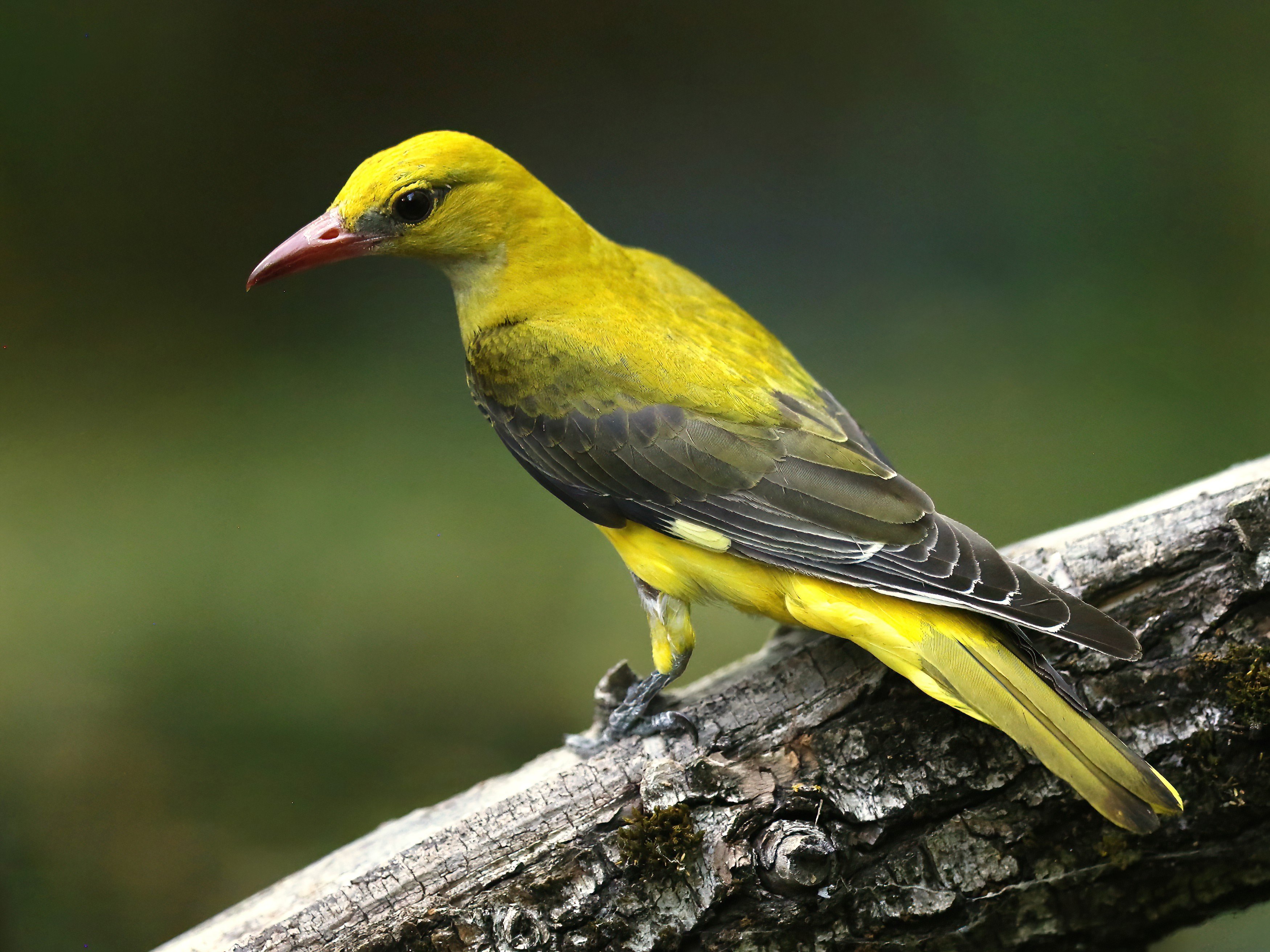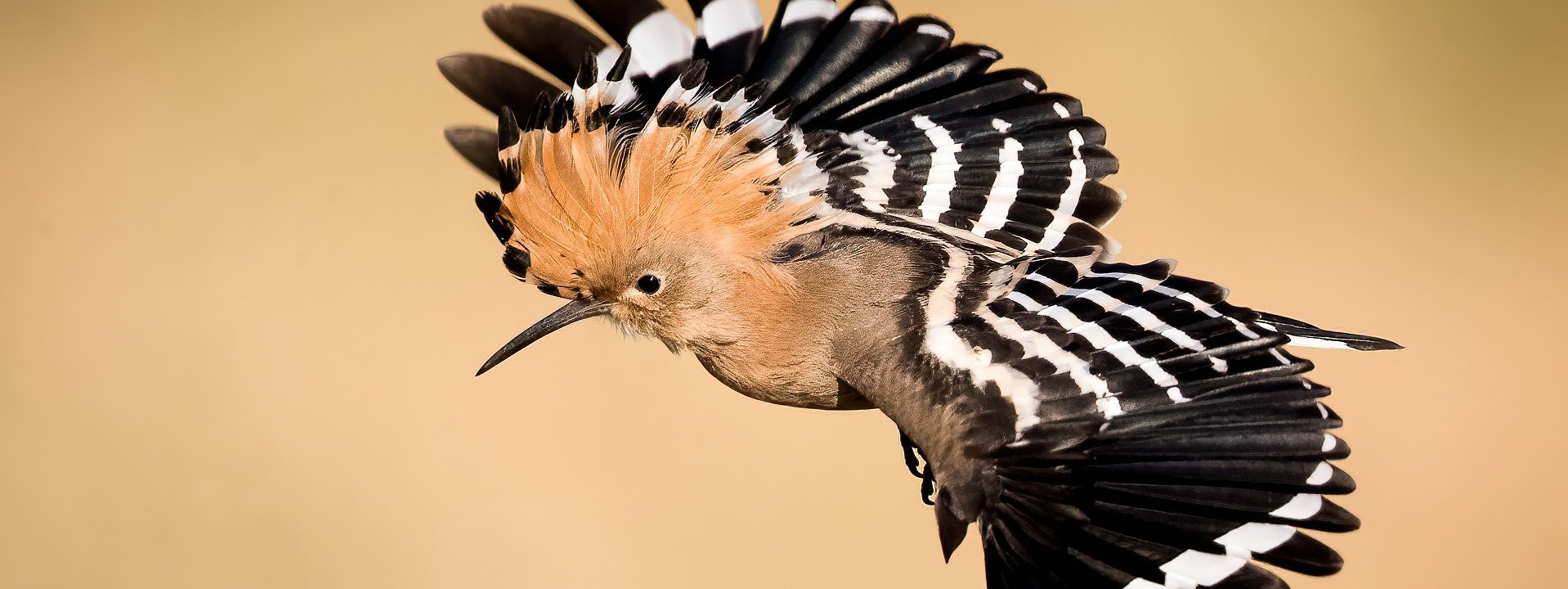Hungary
Birding the European Steppe
An 8-day, small group birdwatching tour to Hungary
Limosa's Birdwatching tour to Hungary in June is a small group natural history holiday, based at the Kondor Eco-Lodge in scenic Kiskunság National Park. Less well known than the similar Hortobágy, it teems with wildlife and preserves parts of the once continuous Eurasian steppe or ‘puszta’.
Great Bustard and Saker Falcon are the stars but the park's forests, fishponds, oxbows and alkaline lakes hold everything from Pygmy Cormorants and Red-footed Falcons to Rollers and Lesser Grey Shrikes.
In June, the area is also excellent for butterflies and dragonflies and the likes of Lesser Purple Emperor, Cardinal, Yellow-spotted Emerald and Large White-faced Darter are among a host of species which can be seen but are not found in the UK.
On this easy-paced tour, you have an opportunity to step back in time and enjoy the wildlife of one of Europe's most important wild areas.
Tour Dates & Prices
Mon 2nd June 2025
Mon 9th June 2025
- Available
Tour Cost: 8 Days from £2795 excluding flights
What's Included?
- Limosa's English-speaking Hungarian guide
- 7 nights accommodation in Hungary
- All main meals and drinking water provided
- Minibus transport and boat trip on Lake Kolon
- All excursions, local guides, entry fees, permits
- All tour-based tips (drivers, staff) and taxes
- Limosa checklist of birds, butterflies and dragonflies
Cost Excludes
International flights, insurance, drinks, airport/in-flight meals and snacks & other items of a personal nature.
Notes
The Land Only Tour Cost is the amount you will pay Limosa.
Despite the end of pandemic restrictions, we have taken the decision to continue to price our holidays as excluding international flights.
To keep the process as simple as possible, we are working very closely with a dedicated agent at Travel Counsellors, Sacha Barbato, who is essentially now our “in house” flight consultant.
Sacha is a highly experienced independent ATOL bonded travel agent, and his contact details are as follows: sacha.barbato@travelcounsellors.com and 01603 360099
He will be able to advise you which flights we are recommending for each holiday and will be able to book these for you.
This will also sometimes give you the option to travel from a regional airport if you prefer.
A second guide will join the holiday if there are more than seven clients on the tour.
Tour Highlights
- Unspoilt, varied and wildlife rich landscapes typical of eastern Europe
- Specialities including Great Bustard, Pygmy Cormorant and Syrian Woodpecker
- Red-footed Falcon colonies, breeding Saker Falcon and Eastern Imperial Eagle
- Impressive numbers of Rollers, Bee-eaters and Lesser Grey Shrikes close to our lodge
- Golden Oriole, Hawfinch and Lesser Spotted Woodpecker are ‘garden birds’
- Expertly led by Limosa's English-speaking Hungarian wildlife guide Gábor Orbán.
Outline Itinerary
Fly to Budapest. Transfer south to Kiskunság National Park. Night Kondor Eco-Lodge
Days spent enjoying the birds, and other wildlife of the area. Habitats include the steppe grassland (puszta), wetlands and forests of Kiskunság National Park. Six further nights Kondor Eco-Lodge
A final morning in the field before returning to Budapest for the flight back to the UK.

The unspoiled countryside of central Hungary has a ‘by-gone' feel to it and offers a superb diversity of natural habitats, rich in wildlife of all kinds. Our June tour is a general natural history holiday and we can expect to see the special birds of the region including Black Stork, Great Bustard, Eastern Imperial Eagle, Saker and Red-footed Falcons, Black and Middle Spotted Woodpeckers, Lesser Grey Shrike and Penduline Tit. The area is also great for other wildlife and we hope to find the European Sousliks, the ground squirrel of the region, as well as a great variety of dragonflies and butterflies. Those we could see include plenty of species not found in the UK, such as Nettle-tree Butterfly, Lesser Purple Emperor, Cardinal, Large White-faced Darter and Yellow-spotted Emerald.
In the safe hands of Limosa's local wildlife expert Gábor Orbán, this single-centre holiday is based at Kondor Eco-Lodge, right in the heart of the lovely Kiskunság National Park but just a 90-minute drive from Budapest Airport. This is the home of Gábor and his wife Andrea and we can expect to be treated like family members at the lodge, where the delicious Hungarian cuisine will doubtless become a feature of this tour.
The birdlife of Kiskunság has much in common with that of Hungary's more famous Hortobágy National Park to the east but those in the know would say that the Kiskunság has a more varied and prettier landscape that makes it just perfect for an 'all round' wildlife holiday such as this.
During the week, we plan to alternate local days with some explorations a little further afield, although none of the birding sites is more than an hour’s leisurely drive from our lodge.
The Kiskunság preserves parts of the once continuous Eurasian steppe or puszta and hosts one of the largest populations of Great Bustards on the continent. We will make a special effort to locate this majestic bird and as we search for them, we may encounter Eastern Imperial Eagle soaring above the grasslands. The rare Saker Falcon, which has taken to breeding in nest boxes provided for them on pylons, is also possible.
Close encounters with the beautiful Red-footed Falcon are another highlight here in summer and we should have the privilege of seeing this delightful little raptor at a breeding colony.
Our rural lodge is thatched and has a lovely garden, so there will be lots to keep us occupied during our stay. The tropical fluting of Golden Orioles and the purring of Turtle Doves will be audible from our rooms and for keen photographers there will be the opportunity to use a selection of carefully located hides within the grounds to photograph a variety of species. Cardinal and Dryad butterflies float along the nearby ride, whilst Dainty and Winter Damselflies frequent the ponds.
Exploring the grasslands close to the lodge, we will find colourful Rollers and both Lesser Grey and Red-backed Shrikes. Areas of short grasslands are the home of European Sousliks which is the main food of many of the local birds of prey.
Bee-eaters will be calling overhead and we should have the opportunity to visit a couple of nesting colonies to watch the comings and goings as adults bring food to their young.
The park's fishponds, oxbows and alkaline lakes are alive with birds in June. There are breeding colonies of egrets, herons, Pygmy Cormorants, Spoonbills and Whiskered Terns, while Little Bitterns, Great Reed and Savi’s Warblers, Penduline Tits and Bearded Reedlings inhabit the reedbeds.
Areas of forest are home to Honey Buzzard and Black Stork, as well as Black, Lesser Spotted and Middle Spotted Woodpeckers. We should find Small, Southern and Willow Emerald Damselflies which are all relatively numerous, while in the woodland clearings we can search for Map Butterfly and Common Glider. Lesser Purple Emperors frequent the riverine woods along the Tisza and we will make an effort to find them too.
On one day, we plan to visit the reserve at Lake Kolon where along with a wide variety of birds we will look for Large White-faced Darter, Southern Migrant and Norfolk Hawkers, Lesser Emperor, Yellow-spotted Emerald, White-tailed Skimmer and Southern Darter. There are also wildflower meadows to walk looking for more butterflies and in June, the highlights could include Nettle-tree Butterfly, Lesser Fiery Copper, Mallow Skipper, Knapweed Fritillary, Chestnut Heath, Short-tailed and Idas Blues and both Swallowtail and Scarce Swallowtail.
With so many wonderful birds, butterflies and dragons on offer, this is a summer tour not to be missed and one that will certainly wake you up from those drowsy, mid-summer days at home!
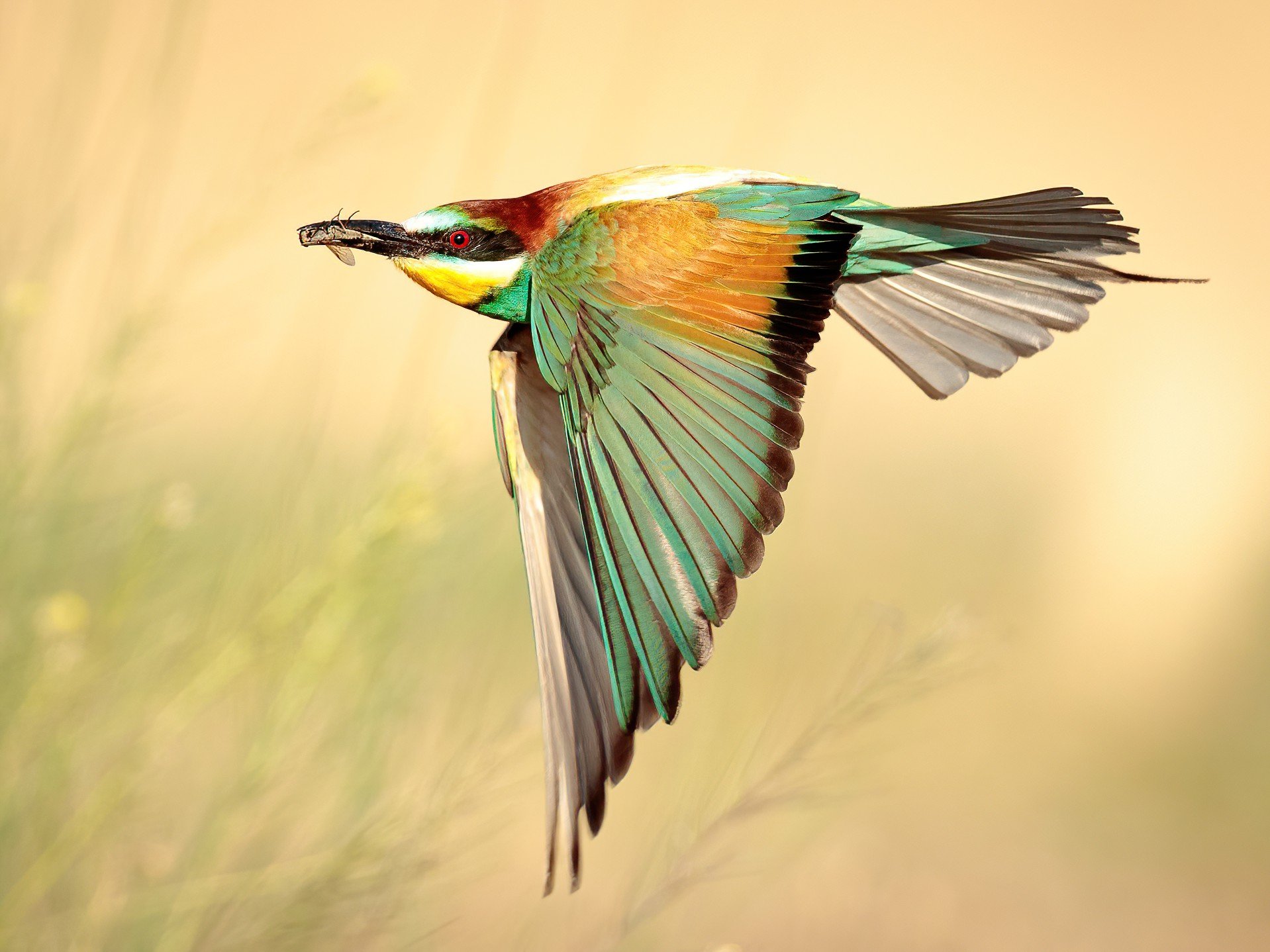
Day 1
FLY TO BUDAPEST, TRANSFER TO KISKUNSAG NATIONAL PARK
Our summer birdwatching and wildlife tour to Hungary begins with a flight to Budapest, the Hungarian capital. We will be met on arrival by Gábor and his wife Andrea and head south in our minibus for around 90 minutes to reach their home, the Kondor Eco-Lodge, with the busy airport motorway soon giving way to deserted country lanes!
We expect to arrive at the lodge in the early evening and having checked in to our rooms, we can relax over the first of our lovely home-cooked Hungarian dinners, perhaps washed down with draught lager or a glass or two of the famous red wine Egri Bikavér, the bull’s blood of Eger. Set in the heart of lovely Kiskunság National Park, this tranquil lodge will be our base throughout the holiday. Night at Kondor Eco-lodge, Kiskunság National Park
Days 2-7
KISKUNSÁG NATIONAL PARK
Our thatched lodge is situated in a small area of woodland and the grounds are cool, shady and a haven for wildlife. From our rooms we can expect to hear the fluty song of the Golden Oriole, the purring of Turtle Doves and the staccato call of Lesser Spotted Woodpecker. Black Redstarts breed in the lodge buildings and Short-toed Treecreeper, Spotted Flycatcher and Hawfinch are all regular visitors. There will be an opportunity each day to wander in the tranquil gardens before our 8am breakfast. The dining room table will be beautifully laid out with a range of cereals, yoghurts, salads, cold meats and cheeses, home-made jams and fruit. From this sumptuous fare, we make up our own picnic lunches as part of our daily routine.
A short stroll along a nearby track takes us deeper into the forest, which is home to Honey Buzzard, Goshawk and Black Woodpecker, then on to a clearing where it is sometimes possible to see Red-backed Shrike, Woodlark, Wryneck and Barred Warbler. Walking in the opposite direction a path alongside a large hay meadow provides us with opportunities to look for Rollers, Bee-eaters, Hoopoes and Lesser Grey Shrikes, and marvel at the variety and number of birds in the area.
Unsurprisingly, on our first full day we have no need to venture far from our lodge. An area of short grassland holds good numbers of Sousliks, a rodent which is the main food item for many of the local birds of prey.
We plan to visit an area where Bee-eaters nest in holes in the ground right next to the track and these gorgeous birds allow close approach without being disturbed. They certainly decimate the local dragonfly population!
The flat grassy plains of the Hungarian puszta have several different habitat types ranging from dry grassland to marshy meadow and other birds we might see in this area include Little Owl, Corn Bunting, Crested Lark and Tawny Pipit. Quail call from time to time and the concentration of Rollers in Kiskunság undoubtedly makes it one of the best places in Europe to observe this colourful species. Interestingly, the population here is bucking the general trend and continuing to increase, due to the tireless efforts of the local conservationists to place nest boxes in strategic places.
Kiskunság’s roadside verges and flower-rich meadows are filled with butterflies. Our identification skills will be tested from the off by the blues, with Silver-studded, Idas, Reverdin’s, Eastern Baton, Short-tailed and Eastern Short-tailed amongst numerous possibilities!
Pale Clouded and Eastern Pale Clouded Yellows are another difficult species pair, though separating Chestnut and Small Heaths should be rather more straightforward. Lesser Fiery Copper, Eastern Bath White, Marbled White and Wall Brown are very distinctive and we also hope to enjoy close looks at the aptly named Lesser Spotted Fritillary, one of the most sought-after butterflies of this region.
The nearest small town offers the chance of a coffee or cold drink and often plays host to a pair of Syrian Woodpeckers.
After getting to grips with the wildlife near the lodge, we will head a little further afield the next day, although none of the drives are especially long, with nowhere more than an hour or so from Kondor.
The north Kiskunság is perhaps the best place to search for Great Bustards in some of the more remote puszta. The Park hosts one of the largest populations of this declining species in Europe but perseverance and patience may still be required to find one!
Although the Kiskunság is largely flat, a small hill increases our chances of spotting a bustard and is also a good place to scan for raptors. We will hope to see the rare Eastern Imperial Eagle as well as Montagu’s Harrier.
Another colony of Bee-eaters in a nearby small quarry should allow yet more photographic opportunities before, via a well-appointed cake shop (!!), we make for a vast area of fishponds.
From a centrally placed tower hide overlooking the water, we will look for Garganey, Ferruginous Duck and Red-crested Pochard out on the water. Great Egret, Purple Heron and Marsh Harrier are all possible and both Savi’s and Great Reed Warblers plus Bearded Reedlings could be right below us.
Continuing onwards, our final stop will be a Red-footed Falcon colony. These beautiful birds breed in Rooks’ nests and, because our chosen spot is used by general tourists, the birds have been habituated to people and allow us to observe them from remarkably close range. White Storks often nest here too and should provide a fitting end to a varied and bird-filled day.
The habitat of the western area of the Kiskunság includes an impressive area of alkaline lakes, rich in nutrients and Avocet, Black-winged Stilt and Little Ringed Plover are three of the shorebirds which breed in this area.
By mid-June, most other species of wader will be on their nesting grounds further north but it is possible we might see late spring or early autumn migrants such as Ruff or Wood Sandpiper. Large flocks of Greylag Geese inhabit the lakes and the sight and sound of the birds taking to the air is impressive and might also alert us to the presence of a majestic White-tailed Eagle!
Another tower hide allows us to look far into the horizon and nearby a large, covered table is the ideal place for our picnic. Pottering onwards from here, we hope to find Dark Spreadwing, a local and uncommon dragonfly which breeds exclusively in shallow coastal and inland saline wetlands. Another speciality is the Scarce Blue-tailed Damselfly: the orange aurantiaca form of the female is so different from other damselflies as to be immediately obvious even to the untrained eye.
A number of roadside ponds are very different in character from the salt lakes, and we can expect to find Black-necked Grebes in dapper summer plumage plus noisy, nesting Whiskered Terns.
The secretive Little Bittern is also possible, but while we may need a prolonged flight view if we are all to see one, the strikingly orange male Large Copper will stand out like a beacon in the tall grasses.
Resisting the temptation to linger near another Red-footed Falcon colony, we make a short drive to an oxbow lake surrounded by tall trees with a channel on one side. The star attraction in this area is Penduline Tit and we hope to find a pair attending their wonderfully ornate nest. Icterine Warbler also breeds here, and we hope that the loud-voiced males will still be holding territory.
While scanning the water’s edge might produce a Kingfisher or two (as well as a Grass Snake or European Pond Terrapin), this site is one of the best for dragonflies and is where we can learn to separate Southern Darter from Common Darter and White-tailed Skimmer from Black-tailed Skimmer. White-legged Damselflies are also relatively abundant here.
The floodplain of the River Tisza, on the eastern side of the Kiskunság, is pitted with oxbow lakes and these wetlands hold high concentrations of waterbirds. As we stroll slowly through an area of ‘proper forest’ on our way to one of the lakes, we will be on the lookout for Middle Spotted and Black Woodpeckers, as well as commoner woodland species.
It is possible to see both Treecreeper and Short-toed Treecreeper together in this area, one of few places in Europe where this occurs. Dryad, Common Glider and Map Butterfly, along with Winter and Willow Emerald Damselflies are all possible in the rides and clearings.
A lake covered in water lilies provides ideal habitat for Whiskered Terns and Squacco Heron and a perfectly positioned tower hide should allow us to observe Southern Migrant Hawkers patrolling the woodland edges. The flower-rich meadows are worthy of exploration as we strive to get to grips with all the different fritillaries, coppers and blues, darters and damselflies.
Having enjoyed our picnic in the picturesque town of Tiszaalpár, we head next to a viewpoint that will give us an idea of the sheer scale of one of the best wetland areas of this region, as well as another chance to find Syrian Woodpecker, which favours town parks, gardens and squares rather than the woodlands.
Pottering down to the water’s edge, we cannot fail to be impressed by the numbers of Great and Pygmy Cormorants, Great and Little Egrets, Black-crowned Night Herons, Black-necked Grebes and Spoonbills. Scanning above the trees might reveal a party of thermalling Black Storks or raptors such as Short-toed Snake Eagle or Osprey. The damper tracks can attract butterflies and we have our first chance of seeing the gorgeous Lesser Purple Emperor - a flash of vivid colour sure to live long in the memory!
Reacquainting ourselves with one of the areas not far from our lodge will take us to a well-marked nature trail through an area of damp woodland. We have a further chance to see Black Woodpecker and Honey Buzzard here, whilst Small Emerald and Southern Emerald Damselflies occur side-by-side to allow proper comparison.
The sight of a Cardinal butterfly flashing its red underwings whilst feeding on a tall flower will certainly produce a ‘wow’ and another click of the shutter!
Grasshopper Warbler, Whinchat and Northern Wheatear are possibilities from a nearby mound and it will be worth keeping an eye out for one of the local pairs of Marsh Harriers performing a food pass. A nearby open area usually holds nesting Barred Warbler, Tawny Pipit, Lesser Grey and Red-backed Shrikes and we shall make a special effort to see the powerful Saker, which breed in nest boxes provided for them on pylons.
On one day, we intend to visit the reserve at Lake Kolon where we hope to take a relaxing boat trip out on the water to enjoy a multitude of dragonflies. Large White-faced Darter is the speciality and our tour coincides with the peak time for this species. Yellow-spotted Emeralds patrol the reed edges, and out over the water, we should find Southern Migrant and Norfolk Hawkers, Lesser Emperor, Four-spotted Chaser, Scarlet Darter and Small Red-eyed Damselfly.
Birds may play second fiddle to the dragonflies on our boat trip, but we have chances to see the likes of Penduline Tit, Pygmy Cormorant and Squacco Heron and we might hear Savi’s Warbler reeling, Bearded Reedling pinging and Water Rail squealing.
The sandy soils around Lake Kolon allow pine forests and heathland flora to flourish and butterflies in this area include both Common and Scarce Swallowtails, Nettle-tree Butterfly and Queen of Spain Fritillary. By way of a contrast, we may divert to an area of puszta where another tower hide affords panoramic views and further opportunities to scan for Great Bustards and watch for Sakers hunting Sousliks.
In the garden of our lodge there are two wildlife viewing and photographic hides overlooking the ponds. Both are available for our use and ideal places to watch for birds coming to drink and bathe in the early morning or late afternoon.
On one night, we hope to run a moth trap and marvel at the quantity and variety of insects. On another, we stroll up a track to a forest clearing which is home to several pairs of European Nightjars and June is the ideal month to see and hear them. Six further nights Kondor Eco-Lodge
Day 8
RETURN TO BUDAPEST, FLY TO UK
After breakfast, we have a couple of hours to enjoy our last encounters with the local Golden Orioles, Rollers, Bee-eaters and Lesser Grey Shrikes and perhaps to add to our butterfly and dragonfly lists before returning to relax over our picnic lunches in the shade of the garden.
In the early afternoon, we load up the minibus and return to Budapest Airport, where we bid farewell to Gábor and Andrea. We check in for our flight home to the UK where our summer tour to Hungary concludes.

WHAT TO EXPECT
An 8-day natural history tour to Hungary focusing on the birds and other wildlife of this special part of Europe. Our tour is deliberately scheduled at a great time of year to see an array of eastern European species.
As ever, please keep in mind that the seasons can vary year on year and this can affect butterfly and dragonfly flying periods, as well as the birds, but we should still encounter an excellent cross-section of species, with opportunities to study many of them.
You are likely to be impressed not only by the variety of birds but by their abundance and this is especially true in the area close to our lodge.
Although by June some passerines may have stopped singing, with patience it is possible to see most of them and, of course, the larger and more colourful species such as Rollers, Bee-eaters and Hoopoes will still be conspicuous.
June is a terrific time to find butterflies and dragonflies here and on a number of our previous tours, several participants have become ‘hooked’ having previously never thought to look at them!
Summer temperatures in this part of eastern Europe typically oscillate around 25-30C (77-86F) but exceptionally can reach highs of 35C (95F). Short periods of summer rain (sometimes heavy) are not unusual. It is rarely windy in summer and the weather forecast is generally reasonably reliable, helping in organising our daily plans.
Good photographic opportunities covering a broad range of wildlife.
BIRDS
120-140 species
BUTTERFLIES
30-50 species (depending on the weather and season)
DRAGONFLIES
15-30 species (depending on the weather and season)
Some interesting mammals, amphibians and reptiles. We hope to run a moth trap on one evening if the weather is suitable.
ACCOMMODATION
Seven nights in simple but comfortable and characterful accommodation, as befits a rural eco-lodge. All rooms are en suite.
Kondor Eco-Lodge is perfectly situated within the Kiskunság National Park of central Hungary and we can expect a warm welcome and delicious, home-cooked Hungarian cuisine often using locally sourced produce.
MEALS
All main meals are included in the tour price, commencing with dinner following our arrival on Day 1 and concluding with a picnic lunch on Day 8.
Breakfast and dinner will be taken at our lodge, whilst our picnic lunches will be enjoyed in the field.
WALKING
Easy. Most walks are short, over good tracks and trails and all are on the flat except one very short hike up a man-made hill. We may enjoy one or two slightly longer walks during the week, although always at a gentle pace.
Sturdy waterproof walking shoes with good corrugated soles for comfort and grip are advised but often something more casual will suffice.
GROUND TRANSPORT
By minibus driven by Gábor or a local driver depending on final group size.

Tour Gallery
View a gallery of images for this tour below, click on an image to view as full size with caption






